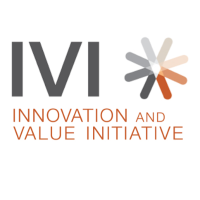Value Blueprints Research Brief Explores Patient-Driven Value Element Framework to Identify Factors Most Important to Patients

Alexandria, VA, June 03, 2021 --(PR.com)-- The Innovation and Value Initiative (IVI), an independent, nonprofit research organization dedicated to advancing patient-centric value assessment, today released a research brief describing the application of a patient-driven value elements framework in identifying value elements important to patients with major depressive disorder (MDD).
Central to constructing IVI’s MDD value model is systematically identifying life and social impact elements important to individuals living with MDD which are often not incorporated into traditional value assessments. To account for these value elements, as described in this new Value Blueprints research brief, IVI partnered with the Patient-Driven Values in Healthcare Evaluation (PAVE) Center at the University of Maryland to utilize their Patient-Driven Value Element Framework. Patient-identified value elements important to individuals living with MDD were identified and quantified.
"By allowing researchers to identify elements that drive value for patients through a rigorous and patient-centric framework, IVI can explore how patients trade off value elements, one against the other,” said Rick Chapman, PhD, IVI’s Chief Science Officer. “We are exploring ways that the results from this experiment can be used in economic evaluations; for example, using patient-centered inputs to inform QALY values in models.”
To refine the PAVE Center’s general set of value elements and identify the most salient ones for MDD patients, interviewers guided 20 individuals through a series of structured activities. Respondents evaluated value elements under each of five domains, indicating all value elements they regard as important, and up to five value elements they think are most important. The five domains were: 1) short- and-long-term treatment effects; 2) treatment access; 3) treatment cost; 4) life impact; and 5) social impact.
The exercise’s purpose is to provide a comprehensive assessment of the relative importance of various value elements based on direct patient input. For example, in the treatment cost domain, affordability was most important to individuals. Applying this method in the context of MDD also establishes a set of MDD-specific value elements for use in future research by others in the field.
Central to constructing IVI’s MDD value model is systematically identifying life and social impact elements important to individuals living with MDD which are often not incorporated into traditional value assessments. To account for these value elements, as described in this new Value Blueprints research brief, IVI partnered with the Patient-Driven Values in Healthcare Evaluation (PAVE) Center at the University of Maryland to utilize their Patient-Driven Value Element Framework. Patient-identified value elements important to individuals living with MDD were identified and quantified.
"By allowing researchers to identify elements that drive value for patients through a rigorous and patient-centric framework, IVI can explore how patients trade off value elements, one against the other,” said Rick Chapman, PhD, IVI’s Chief Science Officer. “We are exploring ways that the results from this experiment can be used in economic evaluations; for example, using patient-centered inputs to inform QALY values in models.”
To refine the PAVE Center’s general set of value elements and identify the most salient ones for MDD patients, interviewers guided 20 individuals through a series of structured activities. Respondents evaluated value elements under each of five domains, indicating all value elements they regard as important, and up to five value elements they think are most important. The five domains were: 1) short- and-long-term treatment effects; 2) treatment access; 3) treatment cost; 4) life impact; and 5) social impact.
The exercise’s purpose is to provide a comprehensive assessment of the relative importance of various value elements based on direct patient input. For example, in the treatment cost domain, affordability was most important to individuals. Applying this method in the context of MDD also establishes a set of MDD-specific value elements for use in future research by others in the field.
Contact
Innovation and Value Initiative
Eric Hoffman
202-285-0810
http://www.thevalueinitiative.org/
Eric Hoffman
202-285-0810
http://www.thevalueinitiative.org/
Categories
